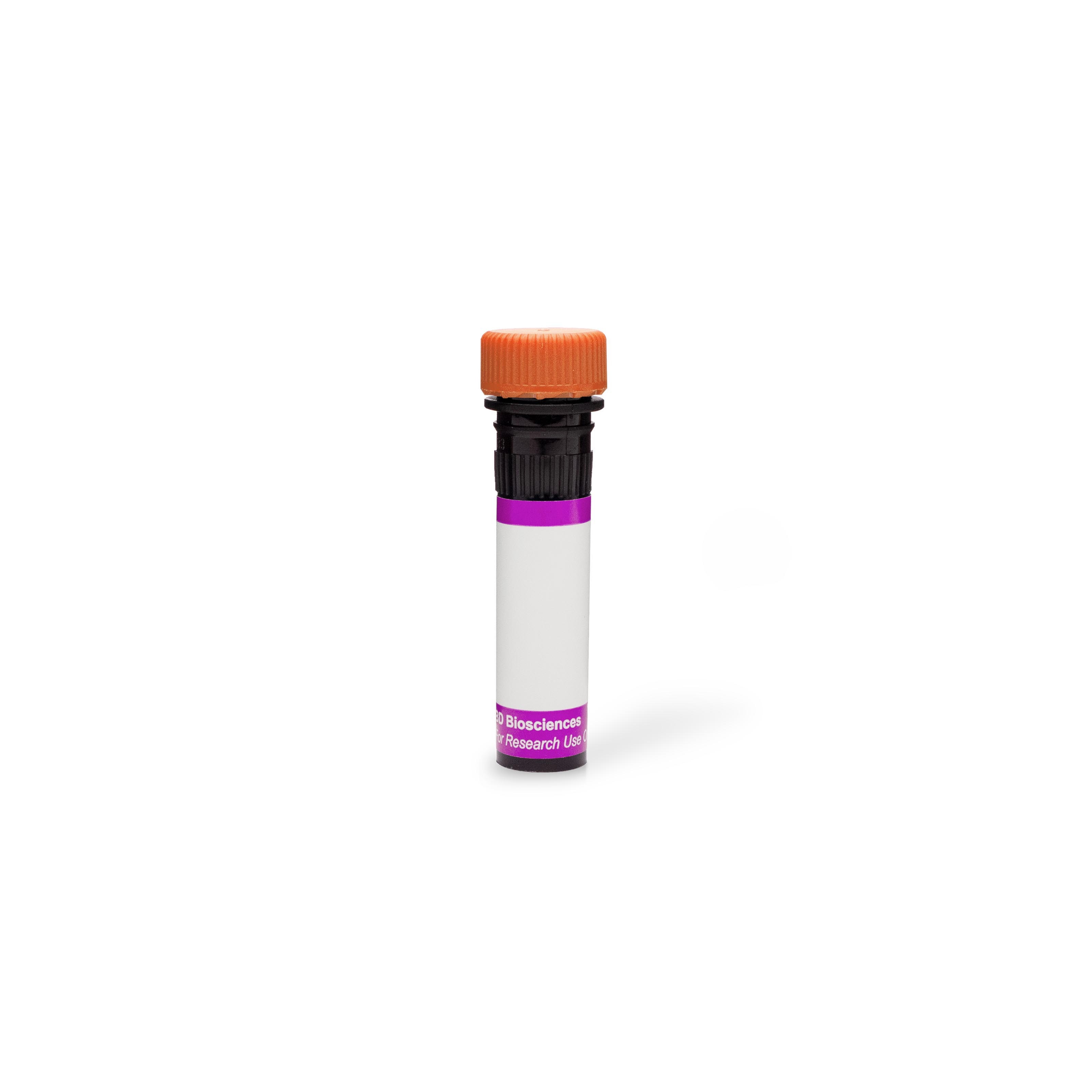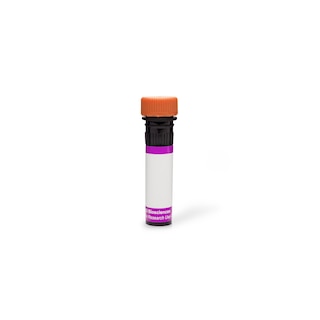Old Browser
This page has been recently translated and is available in French now.
Looks like you're visiting us from {countryName}.
Would you like to stay on the current country site or be switched to your country?




Flow cytometric analysis of CD36 expression on Human peripheral blood platelets. Platelets were stained with either BD Horizon™ BV605 Anti-Human CD36 antibody (Cat. No. 563518; solid line histogram) or BD Horizon™ BV605 Mouse IgM, κ Isotype Control (Cat. No. 563517; dashed line histogram). Flow cytometric analysis was performed using a BD™ LSR II Flow Cytometer System.


BD Horizon™ BV605 Mouse Anti-Human CD36

Regulatory Status Legend
Any use of products other than the permitted use without the express written authorization of Becton, Dickinson and Company is strictly prohibited.
Preparation And Storage
Product Notices
- This reagent has been pre-diluted for use at the recommended Volume per Test. We typically use 1 × 10^6 cells in a 100-µl experimental sample (a test).
- An isotype control should be used at the same concentration as the antibody of interest.
- Although every effort is made to minimize the lot-to-lot variation in the efficiency of the fluorochrome energy transfer, differences in the residual emission from BD Horizon™ BV421 may be observed. Therefore, we recommend that individual compensation controls be performed for every BD Horizon™ BV605 conjugate.
- Please observe the following precautions: Absorption of visible light can significantly alter the energy transfer occurring in any tandem fluorochrome conjugate; therefore, we recommend that special precautions be taken (such as wrapping vials, tubes, or racks in aluminum foil) to prevent exposure of conjugated reagents, including cells stained with those reagents, to room illumination.
- Source of all serum proteins is from USDA inspected abattoirs located in the United States.
- Caution: Sodium azide yields highly toxic hydrazoic acid under acidic conditions. Dilute azide compounds in running water before discarding to avoid accumulation of potentially explosive deposits in plumbing.
- For fluorochrome spectra and suitable instrument settings, please refer to our Multicolor Flow Cytometry web page at www.bdbiosciences.com/colors.
- Please refer to www.bdbiosciences.com/us/s/resources for technical protocols.
- CF™ is a trademark of Biotium, Inc.
Companion Products



The CB38 monoclonal antibody specifically binds to CD36. CD36 is a 88 kDa glycoprotein IV (GPIV), the receptor for extracellular matrix proteins such as collagen and thrombospondin. CD36 is known to mediate the adhesion of Plasmodium falciparum. CD36 antigen is expressed on monocytes, platelets, endothelial cells, and some human tumor cell lines but not on lymphocytes and granulocytes. It is a very early marker of erythroid differentiation. CD36 antibody induces degranulation, release of ATP and serotonin, increase in [Ca2+]ι, and tyrosine phosphorylation of a substrate protein of 130 kDa.
This antibody is conjugated to BD Horizon BV605 which is part of the BD Horizon Brilliant™ Violet family of dyes. With an Ex Max of 407-nm and Em Max of 602-nm, BD Horizon BV605 can be excited by a violet laser and detected with a standard 610/20-nm filter set. BD Horizon BV605 is a tandem fluorochrome of BD Horizon BV421 and an acceptor dye with an Em max at 605-nm. Due to the excitation of the acceptor dye by the green (532 nm) and yellow-green (561 nm) lasers, there will be significant spillover into the PE and BD Horizon PE-CF594 detectors off the green or yellow-green lasers. BD Horizon BV605 conjugates are very bright, often exhibiting brightness equivalent to PE conjugates and can be used as a third color off of the violet laser.
For optimal and reproducible results, BD Horizon Brilliant Stain Buffer should be used anytime two or more BD Horizon Brilliant dyes are used in the same experiment. Fluorescent dye interactions may cause staining artifacts which may affect data interpretation. The BD Horizon Brilliant Stain Buffer was designed to minimize these interactions. More information can be found in the Technical Data Sheet of the BD Horizon Brilliant Stain Buffer (Cat. No. 563794).

Development References (3)
-
Alessio M, Greco NJ, Primo L, et al. Platelet activation and inhibition of malarial cytoadherence by the anti-CD36 IgM monoclonal antibody NL07. Blood. 1993; 82(12):3637-3647. (Biology). View Reference
-
Alessio M, Roggero S, Bussolino F, Saitta M, Malavasi F. Characterization of the murine monoclonal antibody NL07 specific for the human thrombospondin receptor (CD36 molecule). Curr Stud Hematol Blood Transfus. 1991; 58:182-186. (Biology). View Reference
-
Knapp W. W. Knapp .. et al., ed. Leucocyte typing IV : white cell differentiation antigens. Oxford New York: Oxford University Press; 1989:1-1182.
Please refer to Support Documents for Quality Certificates
Global - Refer to manufacturer's instructions for use and related User Manuals and Technical data sheets before using this products as described
Comparisons, where applicable, are made against older BD Technology, manual methods or are general performance claims. Comparisons are not made against non-BD technologies, unless otherwise noted.
For Research Use Only. Not for use in diagnostic or therapeutic procedures.